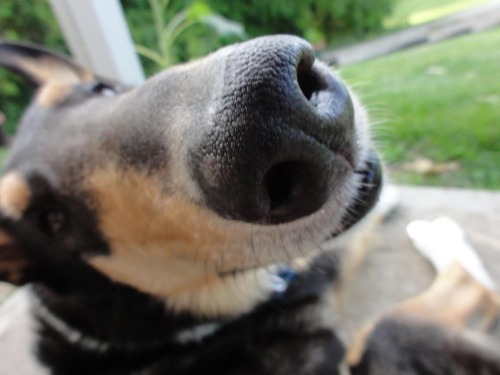Naomi Kane, UC Davis
Experiences, Entry
While working as an assistant in a small, small animal hospital I met a very special client. When I first walked into the exam room to greet the client and the patient, I thought I might have stumbled into the wrong room. “Hello…?” I tentatively asked the empty space, thinking perhaps they had stepped out. “Hi!” a cheerful voice answered back from the other side of the room. Mrs. Q stood less than 5 feet tall, and when seated completely disappeared behind the exam table.
Mrs. Q introduced me to her kitty. We got to talking about what brought her in that day and I quickly realized that we didn’t really share a spoken language between us. All that aside, we had a wonderful conversation. Her cat was very itchy. The veterinarian met Mrs. Q and her cat and, and after a thorough exam, suggested that this kitty and all of Mrs. Q’s other pets start on flea medicine. Mrs. Q looked at us with desperation. She lived alone with 4 cats and a dog, and it was very difficult for her to administer medications. On top of the cost of the medications, she didn’t think she’d even be able to use them. I asked Mrs. Q if she would consider bringing her pets in to see me so I could help her give the medications. So we worked out an arrangement, Mrs. Q would come in a few days every month with her pets, go to the receptionist and ask for “Nayomo” then gesture to her mouth and say “Ah! Ah! Ah!” to signify her baby was there for his or her medicine. I was delighted to see her every time she came in. The language barrier remained but she was such a joy to interact with, that it never mattered.
One morning a few months after we first met, Mrs. Q came in with her dog. She was a sweet, elderly girl who had lost the use of two limbs and both eyes. Mrs. Q decided that there was no more joy in her dog’s life, and she elected to return later in the day for euthanasia. My shift was about to end and I walked Mrs. Q out to her car. I knew I was leaving for vet school very soon, and I likely wouldn’t see Mrs. Q again. She asked me if I could take some photos of her with her dog and email them to her, and I obliged. Later that day I received a message from her that I will cherish and remember as I move through my career. In all of our interactions thus far, we’d never actually spoken much. So, I was surprised by the beautiful message she sent me, thanking me for the care I had given her pets and telling me of her certainty of the great veterinarian I was to become. I aim to earn her kind praises. I look forward to the fun, interesting, and meaningful client relationships that lay ahead.
 Sunday, November 23, 2014 at 12:00PM
Sunday, November 23, 2014 at 12:00PM  LSU in
LSU in  Experiences
Experiences 


